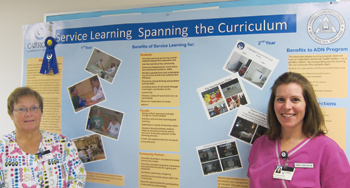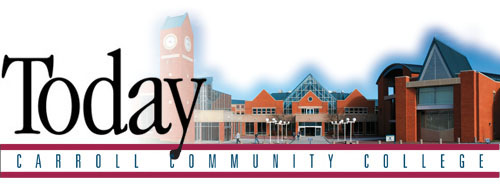|
A poster presentation by nursing faculty members from Carroll Community College was selected as a first place winner among dozens of entries from around the country at a national conference this past spring.
Nursing faculty members LuAnn Gamber and Christina Henyon presented the poster titled "Service-Learning Spanning the Curriculum" at the National Organization of Associate Degree Nursing (NOADN) meeting. Approximately 450 nurse educators attended the annual event in Chicago. The membership of the organization includes nurses involved in academic programs which prepare students for the associate degree in nursing.
"The poster described nursing student activities with our community partners. First-term students participated in blood pressure screenings in county senior centers. This activity was closely supervised by nursing faculty members," said Associate Professor Gamber.
"In the third term of the nursing program, students independently chose a service-learning project and had that project approved by a faculty coordinator," said Gamber. "Photos of students at service-learning sites throughout the county were displayed. The benefits to students, faculty, community partners, and to associate degree nursing programs was highlighted on the poster."
Associate Professor Gamber has received inquiries from other associate degree nursing programs across the country asking for additional information on the project. Student reflections about their service-learning experiences were also part of the presentation.
"I am proud that the nursing faculty at Carroll Community College received national attention for their hard work," said Carroll Nursing Program Director Nancy Perry.
Judges of the poster presentation used criteria such as whether the poster contributed to nursing knowledge and whether it was relevant to associate degree education, among other measures.
Service-learning is important in the nursing curriculum because it enhances the education that nursing students receive by helping them to apply learning to a community setting. Academia and service come together, which benefits the student and the community partner, according to Gamber.

Back to top
|

